Youth today are immersed in digital technology like never before, spending upwards of 8.5 hours daily on screens for entertainment. Nearly half of 11- to 17-year-olds describe feeling “addicted” to their phones, a trend that coincides with a sharp rise in anxiety, depression, and loneliness among young people since 2012—the era of smartphones and social media expansion.¹
In San Diego alone, the California Health Interview Survey shows that 68% of adolescents aged 0–17 use social media on a computer or mobile device almost constantly or many times throughout the day—representing around 180,000 youth. Another 24% (63,000) engage with social media several times daily.
With over 90% of young people connecting to social media every day, these statistics highlight the pervasive influence of digital platforms on their lives and underscore the urgent need to address their effects on mental health, well-being, and digital literacy.
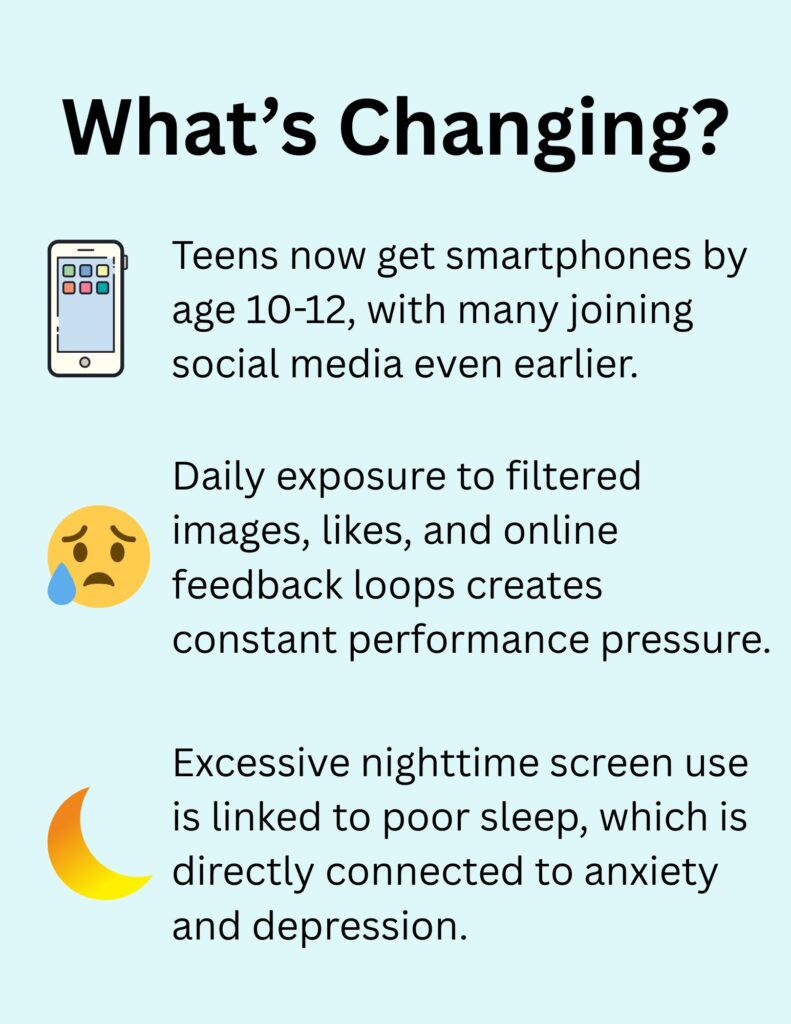
The Anxious Generation: Why Today’s Teens Are Struggling
Psychologist and author Jonathan Haidt links the mental health crisis to what he calls a “phone-based childhood.” In his 2024 book The Anxious Generation, Haidt argues that the rise in unsupervised screen time, reduced in-person play, and early social media exposure is rewiring young minds and driving anxiety. This “great rewiring” particularly impacts girls, who experience increased social comparison and cyberbullying online.
Research from the Pew Research Center shows that about 59% of girls aged 13 to 17 report experiencing online harassment or cyberbullying, compared to 45% of boys in the same age group. Additionally, girls are more likely to engage in social comparison on social media, which has been linked to higher levels of anxiety and depression.

The Hidden Dangers of Constant Connectivity:
How Digital Overload Is Harming Teen Health
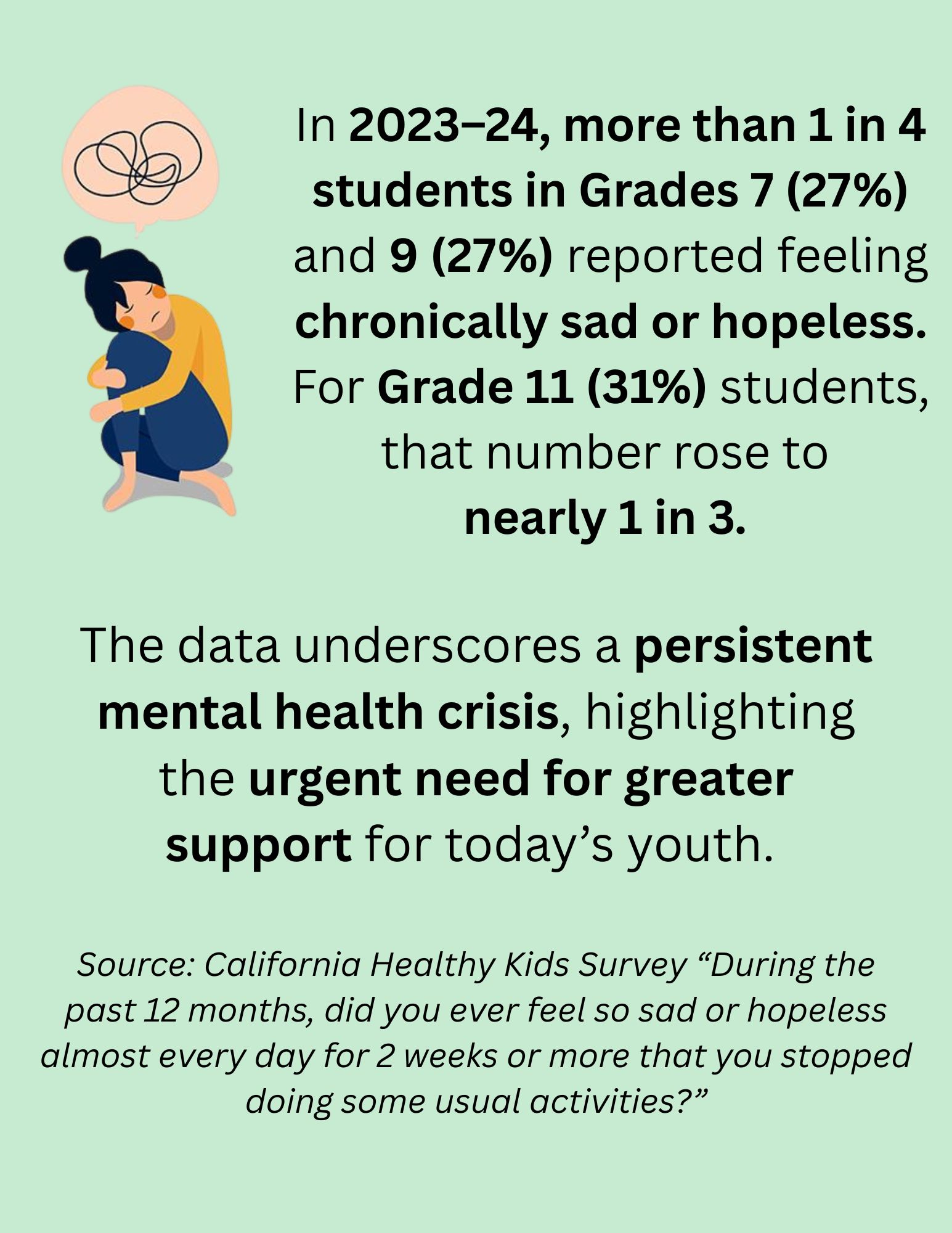
Key Concerns:
Sleep Deprivation: Screen time, especially before bed, disrupts both the quality and duration of sleep. For adolescents, sleep deprivation isn’t just about feeling tired—it’s a major contributor to depression, anxiety, and poor emotional regulation.
Reduced In-Person Interaction: As online interactions replace face-to-face ones, teens are missing essential opportunities to build social-emotional skills, regulate stress, and develop healthy relationships—key foundations for long-term mental wellness.
Social Media & Mental Health: Teens who spend more time on social media are more likely to experience feelings of loneliness, FOMO (fear of missing out), and anxiety. Algorithm-driven feeds often expose teens to harmful content, making it harder to unplug and increasing emotional distress.
Educational Distraction & Lost Learning Time: Mobile devices are a major distraction in today’s classrooms, leading to reduced focus, off-task behavior, and lost instructional time. National teacher surveys show strong support for stricter phone policies, with 70% of educators reporting safer learning environments and 76% noting improved student engagement under strict policies. These schools also report that students lose significantly less learning time each week—highlighting the academic cost of unchecked device use.
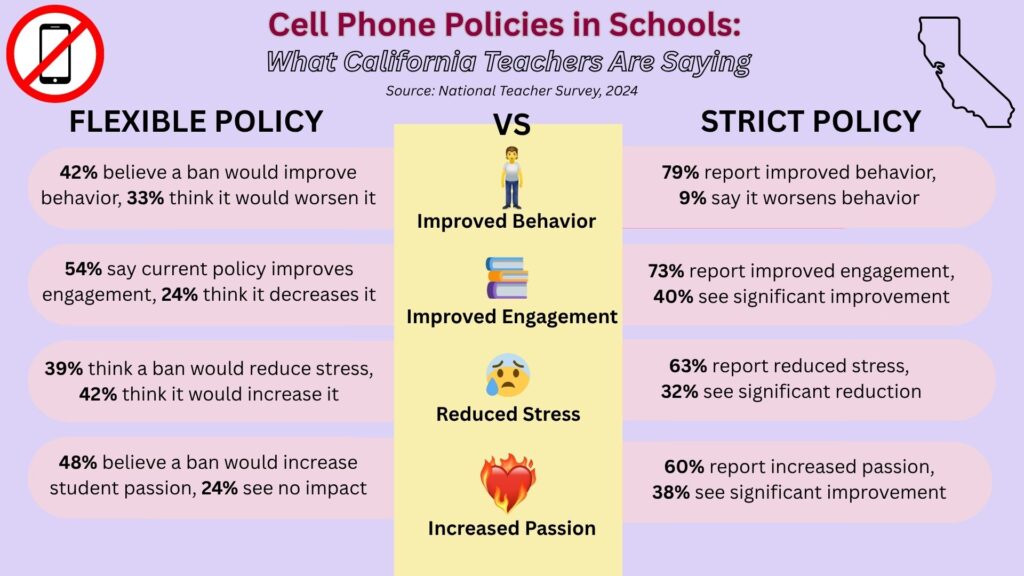
Cyberbullying on the Rise: A Growing Concern in the Digital Age
As smartphone use and online engagement continue to rise among youth, so do experiences of cyberbullying. According to data from the California Healthy Kids Survey, there has been a clear upward trend, particularly among younger students:
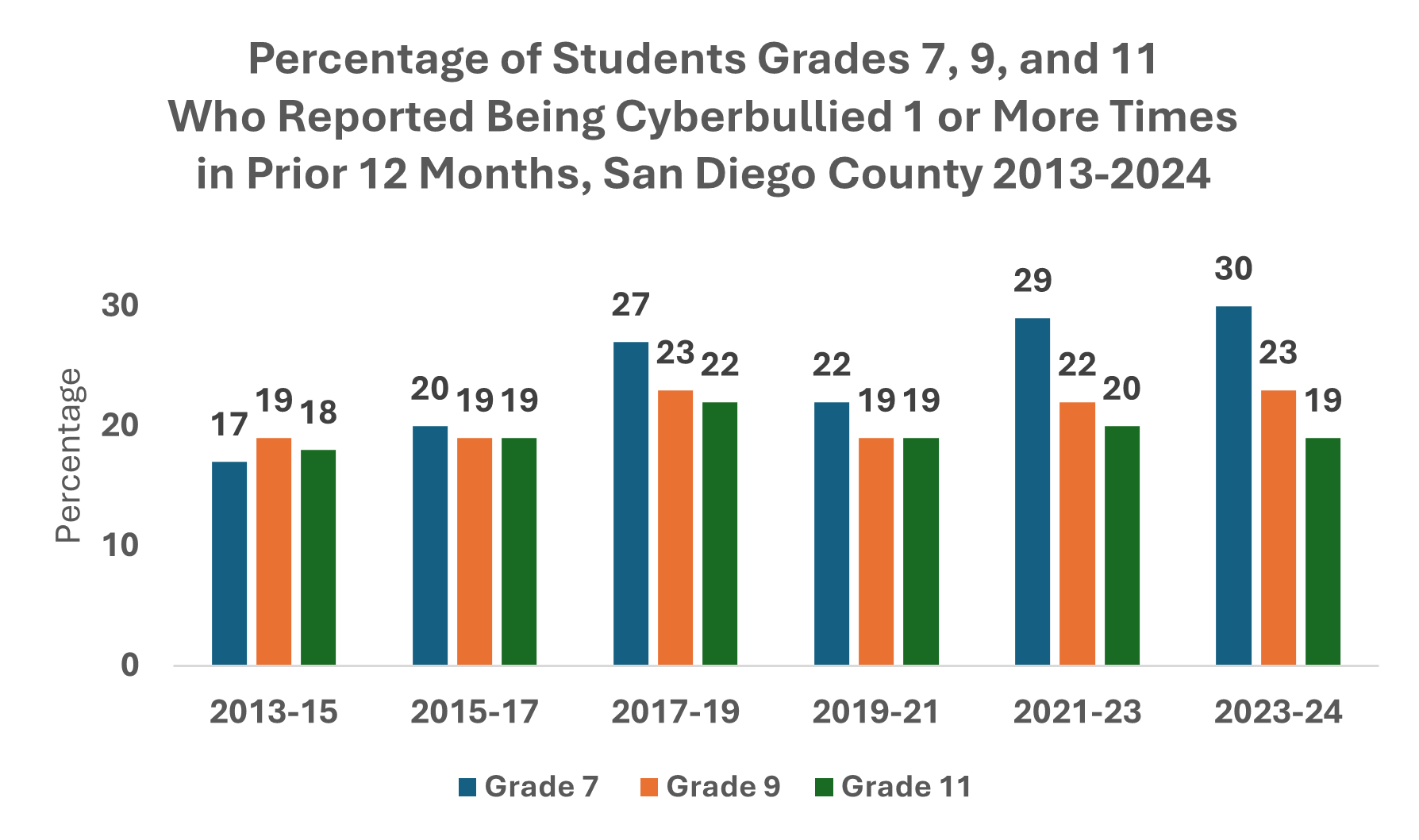
Among 7th graders, the percentage of students reporting being cyberbullied at least once jumped from 17% in 2013–15 to 29% in 2021–23—a 12-point increase over the last decade. While 9th and 11th graders have shown relatively steady rates (ranging from 18–23%), the persistence of cyberbullying remains a concern across all grade levels.
These increases highlight the need for continued conversations around digital safety, mental health, and the role of technology in shaping adolescent well-being. As youth spend more time online, the emotional toll of cyberbullying can contribute to heightened anxiety, depression, and social stress—further underscoring the urgency of prevention and support efforts.
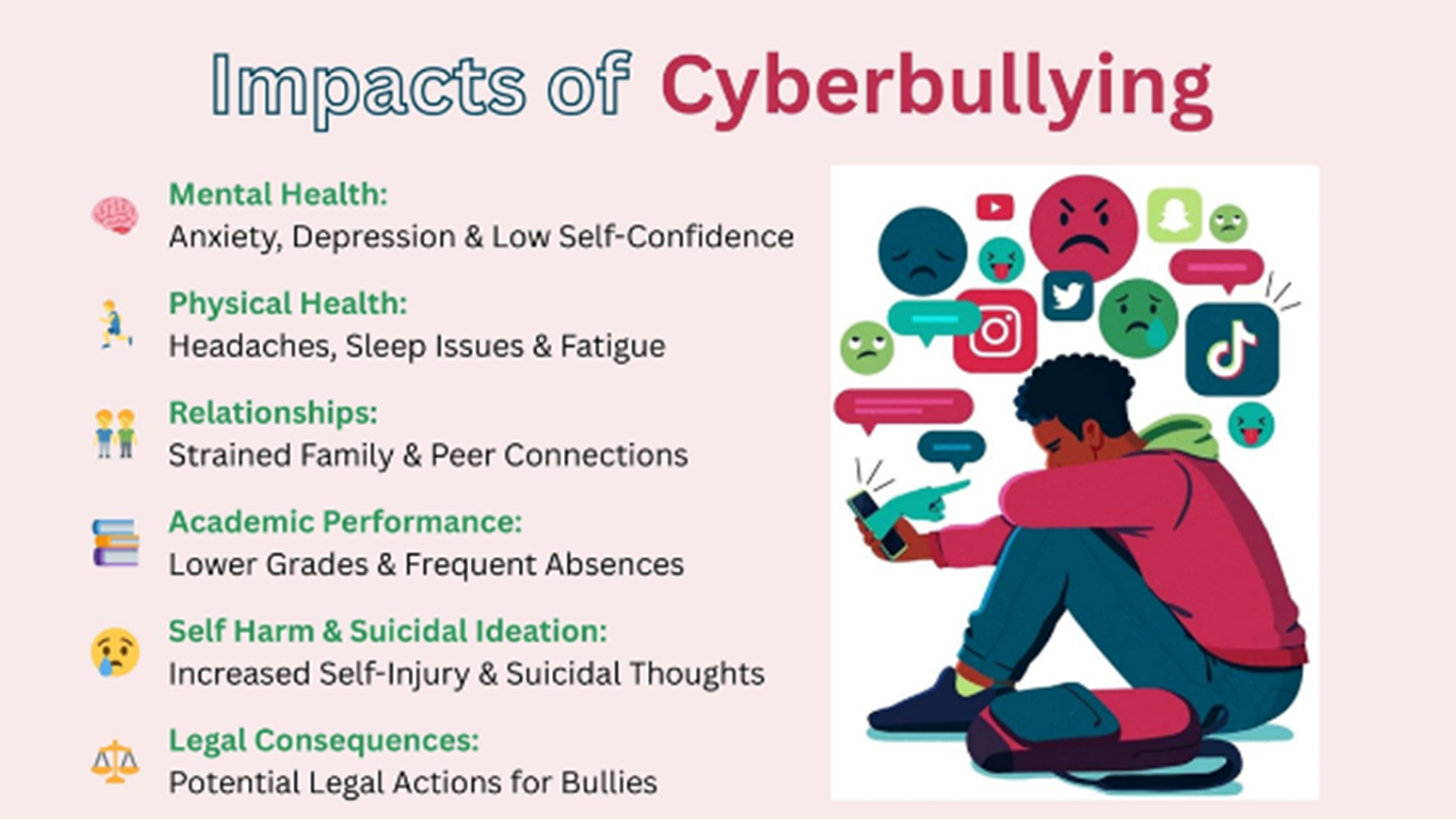
For more information on cyberbullying visit – Understanding Cyberbullying: Types & Impacts
Take Action: Support Youth Mental Health in a Digital World

With rising rates of teen anxiety, depression, and cyberbullying, it’s time to take bold steps to support youth well-being in our digital age.
Be the Difference!
✅ Delay Device Use: Consider postponing smartphone use until high school and delaying social media even longer. Every extra year of childhood counts.
✅ Create Device-Free Zones: Bedrooms, mealtimes, and classrooms should be safe havens from digital distractions. California is already leading with policies that promote phone-free schools—let’s build on that momentum.
✅ Lead by Example: Model healthy screen habits.
✅ Talk About It: Talk openly about digital stress, mental health, and how to set boundaries online.
Together, we can raise awareness and foster healthier environments for youth—online and offline.
Resources:
- The Anxious Generation by Jonathan Haidt
- 2023 Common Sense Media Smartphone Report (PDF)
- American Academy of Pediatrics: Media and Mental Health
- CDC: Youth Mental Health
- Screen Time & Tech Use – Prevention Coalition